Stay Informed
Popular Articles
- Hiatal Hernia: Hidden Cause of Chronic Illness
- Small Intestinal Bacterial Overgrowth (SIBO)
- Applied Lymphology: Unlocking the Secret to Pain Relief
- An Introduction to Constitutional Iridology
- The Low Down on Liver Detoxification
- An Energetic and Emotional Approach to Cancer
- Fat Facts
- Marrow in the Bones
- Blood Type and Nutrition
- Cardiac Herbs: Beyond Hawthorn
Quick Search
The School of Modern Herbal Medicine




Are You In Pain? Nature has Answers.
- 9/1/2015
- Categorized in: Specific Health Problems
 Pain is the primary and universal symptom of all our human afflictions, whether they are physical or emotional. Pain is why we seek help when we are sick. If illness didn’t cause “dis-ease” (“lack of ease” or pain) we would not be motivated to avoid doing things that damage our bodies.
Pain is the primary and universal symptom of all our human afflictions, whether they are physical or emotional. Pain is why we seek help when we are sick. If illness didn’t cause “dis-ease” (“lack of ease” or pain) we would not be motivated to avoid doing things that damage our bodies.
No matter how much we dislike it and want it to go away, pain is not an enemy. Pain is a form of communication. It is how the body tells us it is having a problem. It is the 911 system that the cells of our body use call to call for help. Pain is also the teacher that motivates us, if we let it, to not abuse our body and pursue a healthy lifestyle.
Modern pain-relieving drugs can be wonderful things. They enable us to undergo necessary surgery or dental work without pain. They can also be of great relief to the person who is suffering because of a serious accident or illness.
Unfortunately, pain-relieving medications allow people to disconnect from taking responsibility for their health. Instead of asking “why” they are getting headaches, upset stomachs, muscle aches or other pain, they simply pop a painkiller. Thus, they never make the connection that their pain is originating from their diet, lifestyle and stress and don’t make the changes necessary to be healthy.
Listening to the Message of Pain
The common headache can teach us a lot about the message of pain. Headaches have causes, and in some cases the cause may be as simple as dehydration. If this is the case, drinking more water can greatly reduce headache pain. A headache can also result from over acidity in the body, poor bowel elimination, or excess stress and tension.
Taking painkillers may relieve today’s headache, but it won’t stop you from having another one tomorrow. When we start “listening” to our pain, we can actually learn to stop getting headaches altogether. Headaches are a normal part of most people’s lives only because the average person has the same bad health habits.
When we keep taking painkillers without changing our health habits, we continue doing small things that damage our health. After twenty years of failing to heed these little warnings that something is wrong, we get a bigger “wake up call” in the form of a heart attack, cancer, diabetes or some other serious illness and wonder, “How could this happen to me?"
Besides, painkillers are actually toxic drugs. Sure, they’re okay for occasional relief of pain, but when used frequently they can damage the liver, kidneys, nerves, and other organs. They can even increase the risk of heart disease and other serious health problems.
In this article, we explore some of the underlying causes of pain and what we can do to permanently correct them. We also look at some natural alternatives to pain-relieving drugs that have fewer side effects and may even help to correct these problems long term.
Identifying the Causes of Pain
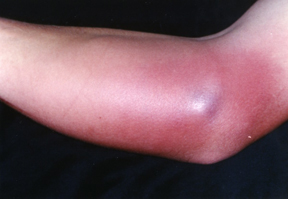 Sometimes the reason why we’re hurting is obvious, as when we get bumped, bruised, scraped or cut. At other times, the cause of our pain is difficult to identify. This doesn’t mean that a cause does not exist; it just means that we aren’t perceiving or understanding what’s ailing our body.
Sometimes the reason why we’re hurting is obvious, as when we get bumped, bruised, scraped or cut. At other times, the cause of our pain is difficult to identify. This doesn’t mean that a cause does not exist; it just means that we aren’t perceiving or understanding what’s ailing our body.
Chemical medicine has capitalized on this lack of awareness and conditioned us to reach for synthetic painkillers the minute we feel pain. The problem with aspirin, acetaminophen, ibuprofen and other painkillers is that they merely numb us to the sensation of pain, rather than relieving the cause of our pain. Going back to the headache example, what if your headaches are being caused by stress or a hormone imbalance? What if they are being caused by chronic inflammation? If you don’t investigate these possibilities, you may never find lasting relief—and you may unwittingly exacerbate the problem.
There’s no question that pain-relieving medications are valuable at times, but it’s also important to probe more deeply into what might be harming your body and then correct it, especially when the pain is persistent and recurring.
The “Dark Side” of Synthetic Pain Relievers
Painkilling drugs should only be used for temporary, short-term relief of serious pain, as all of them are toxic to the body and have potentially serious side effects when used long-term. Not only can people develop chemical and psychological dependency on many types of pain medication, they can also cause damage to vital organs.
For instance, NSAIDs (Non-Steroidal Anti-inflammatory Drugs) are among the most commonly used pain medications in the United States. Available in prescription strength and over-the-counter, NSAIDs reduce inflammation and pain by interfering with the body’s production of chemicals called prostaglandins. Some of the most commonly used NSAIDs are aspirin, ibuprofen, naproxen, ketoprofen and celecoxib.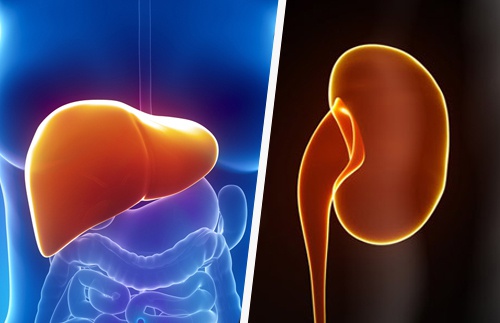
Studies show that long-term NSAID use can increase your risk of serious medical problems, some of which may be life threatening. For example, NSAIDs are a common cause of peptic ulcer disease in the stomach. An ulcer caused by NSAID use may erode into a blood vessel in your stomach or intestine, leading to gastrointestinal bleeding. Symptoms include sharp, persistent stomach pain, vomiting blood, and black stools.
NSAIDs may also increase your risk of having a heart attack or stroke, especially if you have pre-existing heart disease. These drugs can increase your blood pressure and contribute to the progression of atherosclerosis. In a January 2011 article published in the British Medical Journal, Dr. Sven Trelle and his colleagues report that all NSAIDs increase the risk of heart attack and stroke, including ibuprofen. Taking too many NSAIDs can also cause sudden kidney failure or chronic kidney disease. In cases of acute kidney failure, discontinuing the offending NSAID usually leads to recovery of kidney function.
Fortunately, there are better ways to relieve pain, and Nature has provided us with several alternatives.
The Basics of Natural Pain Relief
As previously discussed, pain is a signal from the body that something is wrong. So, when we experience pain we shouldn’t just look for something to relieve the pain. We need to look deeper and try to identify the cause. A great first step is to ask, “What do I need to change in my diet and my lifestyle to stop irritating my body?” Here are some important things to consider as you get started.
 Dehydration
Dehydration
A primary cause of chronic pain is dehydration. Many people have found that simply drinking more pure water has prevented them from getting headaches, eased joint pain, and improved overall health. Try drinking at least 1/2 ounce of water per pound of body weight per day. You may be pleasantly surprised at how much pain and discomfort this simple practice eliminates.
Muscle Tension
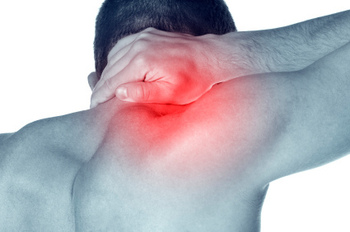 Another common cause of pain is muscle tension. Muscle tension may be brought on by fatigue, stress, poor posture, or repetitive movements over a long period of time. For example, many people who work long hours at a computer get chronic tension in their upper back, neck and shoulders, which can lead to neck pain, back pain and headaches.
Another common cause of pain is muscle tension. Muscle tension may be brought on by fatigue, stress, poor posture, or repetitive movements over a long period of time. For example, many people who work long hours at a computer get chronic tension in their upper back, neck and shoulders, which can lead to neck pain, back pain and headaches.
If muscle tension is causing your pain, make sure you’re getting enough rest and taking periodic breaks from repetitive tasks to stretch and relax. Adopting better posture while sitting or standing will also help. Bodywork, such as chiropractic adjustments or massage therapy, can ease this type of pain for many people. Magnesium helps ease cramping, so try taking 200-400 mg of magnesium daily. Kava kava taken internally and lobelia extract applied topically, along with topical analgesics, can also help.
Inflammation
 Pain is nearly always caused by inflammation. Acute inflammation is usually caused by injury, while chronic inflammation is generally caused by oxidative stress. In either case, inflammation is a natural process designed to sequester a damaged area and trigger an immune reaction that directs white blood cells to the area, thus causing pain. The pain tells us something is wrong and encourages us not to use or further irritate the damaged area until it heals. As the damage is repaired, inflammation subsides, tissues return to normal, and pain is alleviated.
Pain is nearly always caused by inflammation. Acute inflammation is usually caused by injury, while chronic inflammation is generally caused by oxidative stress. In either case, inflammation is a natural process designed to sequester a damaged area and trigger an immune reaction that directs white blood cells to the area, thus causing pain. The pain tells us something is wrong and encourages us not to use or further irritate the damaged area until it heals. As the damage is repaired, inflammation subsides, tissues return to normal, and pain is alleviated.
In chronic inflammation, the inflammatory process continues because the irritation of tissues persists. This is often due to free radical damage, so adopting a diet rich in antioxidants is usually helpful. Since fresh fruits and vegetables are loaded with antioxidants, 60-70% of one's diet should consist of fresh fruits and vegetables. Some people have found that a temporary diet of 100% fresh fruits and vegetables eliminates chronic pain.
Many herbs and spices are also antioxidant, so including herbs like turmeric, ginger, rosemary and sage in recipes can also help. I have found the NSP formula IF Relief helpful here, but there are a number of good anti-inflammatory formulas available at health food stores as well.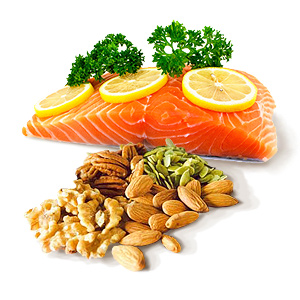
Omega-3 Essential Fatty Acids
Most modern diets are high in omega-6 fatty acids but deficient in omega-3 fatty acids. Many researchers have found that the high ratio of omega-6 to omega-3 fatty acids is pro-inflammatory. Balancing this ratio by consuming more omega-3 essential fatty acids has helped ease pain and inflammation in many cases of chronic pain. It also helps to avoid bad fats (margarine, shortening and processed vegetable oils) and refined carbohydrates, which are also pro-inflammatory.
Toxicity and Stagnation
When tissues become congested due to poor lymphatic drainage, cells accumulate toxic acid waste and suffer from low oxygenation. As a result, the cells cry for help by sending pain signals to the brain. Ear aches, sore throats, menstrual pain and headaches can all occur because of swelling in the lymph nodes and congestion in the lymphatic system.
 In traditional Chinese medicine (TCM) pain is seen as a sign of stagnation. Doing a periodic cleanse using psyllium hulls and gentle laxative herbs can be helpful in reducing chronic pain for many people.
In traditional Chinese medicine (TCM) pain is seen as a sign of stagnation. Doing a periodic cleanse using psyllium hulls and gentle laxative herbs can be helpful in reducing chronic pain for many people.
Massage improves lymphatic drainage and brings blood and oxygen to the tissues. Massage can be even more effective in relieving pain when you also apply a topical analgesic. Deep breathing can also be helpful. Pain is often due to a lack of oxygen in the tissues, and deep breathing not only makes more oxygen available to the tissues, it also moves lymph.
Moderate physical activity like walking or swimming helps increase lymphatic drainage. Gentle bouncing on a mini-trampoline while deep breathing is an excellent way to move lymph and has proven very effective in reducing many kinds of chronic pain.
Over Acidity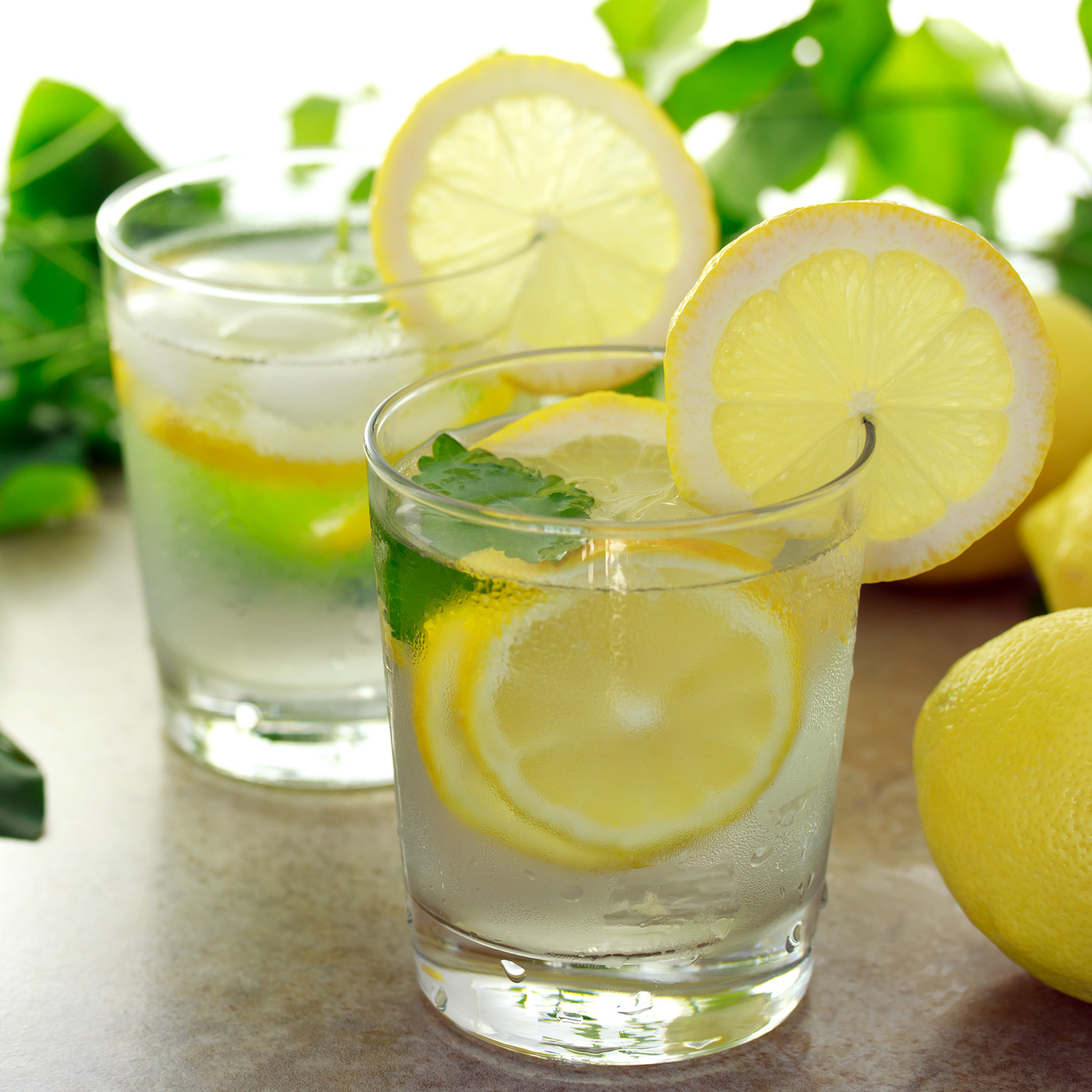
Try drinking alkaline water or going on a short fast using lemon water. Use the juice of four lemons in 1/2 gallon of water, sweetened with a little Grade B real maple syrup. Don’t eat anything for a couple of days and just drink this mixture whenever you are hungry. You should also drink lots of pure water. After two or three days of fasting like this, the body generally becomes more alkaline and many aches and pains simply disappear.
To maintain a more alkaline system, eat a diet that is 70% fruits and vegetables and only 30% proteins and grains. Drinking water with liquid chlorophyll can also help. Chlorophyll helps alkalize the system while carrying more oxygen to the tissues.
Laughter – Still the Best Medicine
Pain can also have emotional triggers, such as grief, depression, anger and fear. The phrase, “Laughter is the best medicine” is based on a real phenomenon. According to the Mayo Clinic, the medicinal qualities of laughter are real and can help ease pain and stress in your body and mind. Laughing releases endorphins, which are the body’s natural pain relievers. Of course it’s difficult to laugh when you’re in pain, so try watching a funny movie, reading a humorous book, or listening to light-hearted music to help you relax and laugh.
Natural Pain Relievers
To appreciate the need for natural pain relievers, consider this: In 2005, over 100 tons of codeine, morphine, oxycodone, hydrocodone and meperidine were purchased in the United States. That’s over 300 milligrams per person! Many of these drugs are addictive, and illegal prescriptions are an increasing problem. Worse yet, people die as a result of misusing these drugs. Fortunately, Nature has remedies to help us relieve chronic pain and inflammation. Many of these remedies not only relieve the pain, they actually help tissues to heal, removing the cause of the pain. Here are some natural pain relievers to consider.
Anti-inflammatory Formulas
To relieve pain due to inflammation, an Anti-inflammatory herbal formula can get to the root cause of many kinds of pain. These formulas generally contain herbs like turmeric, mangosteen, boswellia, white willow and andropraphis, all of which have anti-inflammatory and pain-relieving properties. They are very helpful for easing pain after dental work, surgery, or injury. They not only ease pain, but they accelerate healing. 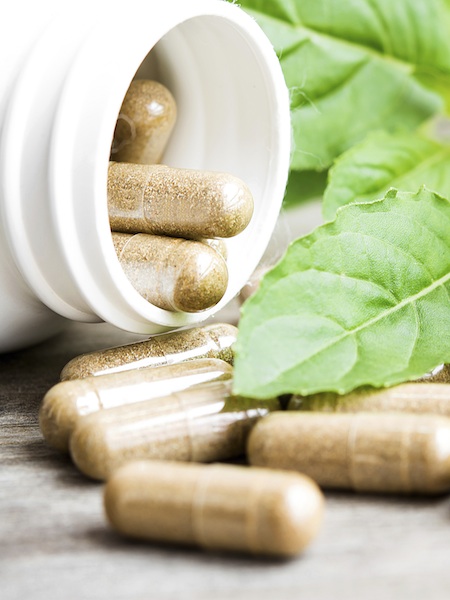
Analgesic Formulas
Many people in modern society like the pain relief provided by COX-2 inhibitors. A natural and safer alternative to these drugs is an extract from the phellodendron tree called Nexrutine®. This compound acts as a natural COX-2 inhibitor and has been used for centuries by traditional Chinese herbalists. Nexrutine® works with the body's natural enzymatic processes to promote comfortable movement without upsetting the stomach. Users report that it supports joint flexibility and healthy muscle recovery after exercise. Analgesic formulas containing this ingredient, white willow bark and other analgesic herbs offer an effective alternative to non-steroidal anti-inflammatory drugs (NAISDs) and generally have fewer side effects.
Another group of analgesic formulas utilize the natural pain-relieving properties of white willow bark, long referred to as “Herbal Aspirin.” This is because white willow bark contains salycilates, the natural compounds from which aspirin was derived. Research shows that salicin helps prevent the production of prostaglandins. These natural aspirin substitutes have been used to ease headaches and other forms of minor pain. Valerian root is sometimes added to help relax the nervous system. Capsicum may also be added to enhance blood flow and oxygenation of the tissues.
Corticosteroid drugs mimic the action of cortisol—a hormone produced by the adrenal glands. Many people suffering from chronic pain are also suffering from chronic stress and adrenal “burnout.” So, supporting the adrenal glands will often help to ease chronic pain. Licorice root has a cortisol sparing action and is anti-inflammatory. Other herbs with a cortisol-like pain relieving action include wild yam and yucca. Yucca can be helpful for chronic muscle and join pain, while wild yam is better for easing pains in the digestive tract and the pelvis.
Topical Analgesics
 A traditional approach to easing pain is to use a topical analgesic, something you massage into sore muscles, aching joints or other painful areas of the body to bring relief. Two of the best topical analgesics are Tei Fu Oil from Nature’s Sunshine and Tiger Balm. There are many others. The essential oils in these formulas stimulate circulation to the afflicted area of the body, bringing blood and oxygen to the tissues. Both the rubbing and the oils themselves promote lymphatic drainage, which clears acid and congestion away from the tissues.
A traditional approach to easing pain is to use a topical analgesic, something you massage into sore muscles, aching joints or other painful areas of the body to bring relief. Two of the best topical analgesics are Tei Fu Oil from Nature’s Sunshine and Tiger Balm. There are many others. The essential oils in these formulas stimulate circulation to the afflicted area of the body, bringing blood and oxygen to the tissues. Both the rubbing and the oils themselves promote lymphatic drainage, which clears acid and congestion away from the tissues.
Topical analgesics also have a direct analgesic (pain relieving) effect. They reduce nerve pain sensations, while reducing inflammation and promoting healing at the same time. The key to using this approach effectively for chronic pain is to apply the remedy and massage the area frequently enough to prevent the pain from returning. This keeps circulation going to the area and promotes rapid healing.
These oils have been applied topically to ease sore muscles, arthritic joints, sore throats, swollen lymph nodes, bee stings and insect bites, bumps and bruises, and other minor injuries.
Joint Healing Formulas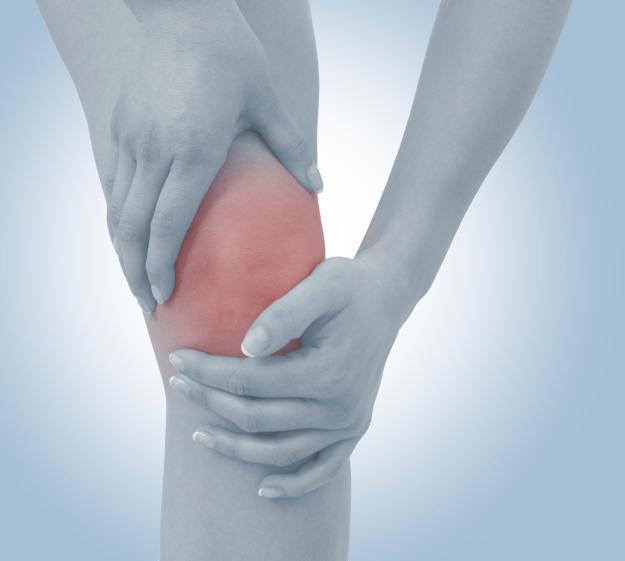
These formulas have helped millions of people suffering from arthritis and similar conditions to enjoy significant pain relief and greater mobility. Typically, they contain glucosamine, chondroitin, MSM, hyaluronic acid and other ingredients proven to lubricate, replenish and protect the joints and connective tissues.
Glucosamine helps lubricate joints by replenishing synovial fluid, which promotes a joint’s shock-absorbing abilities. Chondroitin sulfate attracts fluid and draws nutrients into the cartilage, making the cartilage more shock absorbent. It also promotes growth and normal tissue generation and keeps enzymes in balance.
Methylsulfonylmethane (MSM) is a significant component of the body’s proteins, hormones, enzymes and tissues. It is present in many fresh foods but is destroyed through cooking, processing and storage. Supplementing with this nutrient ensures an adequate supply of sulfur—an important structural component of tissues that connect muscle to bone.
Hyaluronic acid (HA) is an important component of cartilage and synovial fluid; it occurs naturally throughout the body. This molecule plays a crucial role in joint motion, the maintenance of joint homeostasis, and skin support. HA promotes the viscosity and elasticity of the fluid surrounding the joints.
Anti-inflammatory herbs like Devil’s claw, ginger, turmeric, rosemary, thyme, sage, cloves and cinnamon may also be included in these formulas, as reducing inflammation can reduce tissue damage and promote better flow of blood and nutrients to the joints.
Nervine and sedative herbs like kava kava, lobelia, valerian and wood betony may also be included to relieve pain by reducing tension and stress.
Vulneraries
Vulneraries are herbs that help tissues heal. While they do not directly relieve pain, vulneraries are possibly the ultimate pain relievers, because they can resolve the cause of pain by helping to return tissues to their normal state. These remedies can be taken along with analgesics and anti-inflammatories to help permanently ease pain due to tissue damage. Herbs with vulnerary properties include yucca, black cohosh, horsetail, celery, alfalfa and burdock.
Additional Help and Information
We have two Ebooks on relieving pain, Simple Secrets to Pain Relief without Medication and Nature's Pharmacy for Pain. They are available for a suggested donation of $10 ($5 per Ebook), but you can adjust the price you want to pay in the shopping cart as our primary purpose is to get this information out to people who need it. Click the button below to get them:
You can also consult some of the following books.
The Comprehensive Guide to Nature’s Sunshine Products by Tree of LightNature’s Pain Killers by Carl Germano and William CabotReversing Chronic Pain by Maggie Phillips

